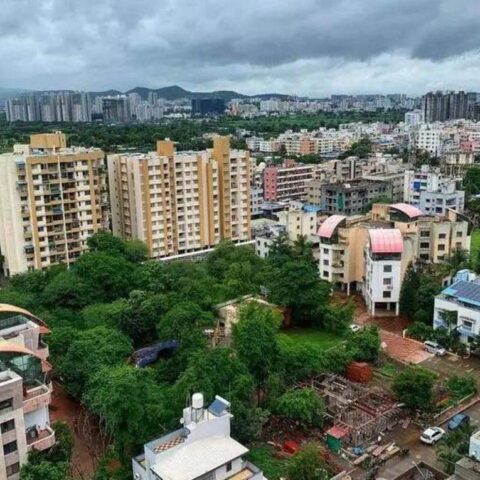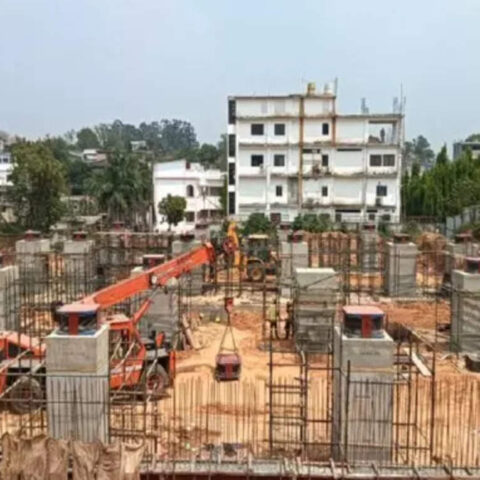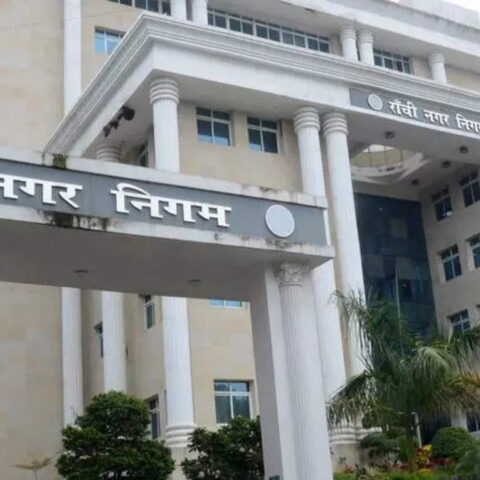
There’s been a relative dearth of condominium launches in the Greater Toronto Area since the Bank of Canada raised interest rates to cool inflation, but that could change by the end of 2024. If it does, CEO Brian Levy says DBS Developments plans to hit the ground running with at least one major project.
“Like every developer, we’re watching the market right now,” Levy told RENX. “By this time in 2025, my prediction is that (the Bank of Canada’s overnight lending rate) will be down over 100 basis points from where it is today. That’s a significant drop in a short period of time, and once it starts dropping you’ll see a lot of launches happening.”
Among those launches will be DBS Developments’ second phase of Metro Park, a transit-oriented community in the Don Mills and Eglinton section of North York’s Flemingdon Park neighbourhood, which will feature 552 units across two towers and two blocks of three-storey townhomes.
The first phase was a 37-storey tower with 405 units, and while DBS is tight-lipped about Metro Park II, Levy anticipates that will soon change.
Levy “optimistic” about coming months
“I’m optimistic about the future of the market; interest rates should come down in June and there should be a considerable decrease then and once they drop, investors and purchasers will gain more confidence in the market. Hopefully you’ll (see) launches in the fall and into 2025, with developers launching a lot of projects.”
Levy anticipates Phase II will be among the city’s top launches this year — if his prognostication holds — because of the transit options.
Not only will the Eglinton LRT be nearby, the below-grade Ontario Line is also slated to run through and transport passengers into the downtown core.
“So as an investor looking to purchase at Metro Park, just like investors who bought into Phase I, they see the upside in the infrastructure investments in the neighbourhood,” Levy said. “There’s future upside in that neighbourhood.”
Another of Metro Park’s chief selling points, Levy added, is it’s not a so-called “Toronto core project” — meaning the price per square foot could be as much as $200 lower because it’s not centrally located.
“You’re going to be at a bit of a discount to a Toronto core site, and from an investor perspective, you have to look at what your prospect is on the rental side,” Levy said, adding DBS Developments is fond of markets with limited rental supply.
Upcoming purpose-built rental developments
DBS Developments is hyper aware of the GTA’s rental market — so much so that it has a couple of purpose-built rental developments on the go.
Bela Square is an east-end development comprising 35- and seven-storey towers, the latter of which is has yet to launch. However, it has already begun pre-leasing, while the 484-suite first phase is slated for occupancy sometime in Q1 2025.
DBS’s other purpose-built project is called 2Fifteen, a 20-storey luxury rental building with 177 units located in the tony Forest Hill neighbourhood.
Of the remaining units, one-bedroom suites start in the low $3,000s, while two-bedroom apartments are going for roughly $6,800.
The penthouse units can rent for as much as $20,000 a month.
But that’s part of 2Fifteen’s allure: it’s dressed to the nines and offers a curated living experience Levy believes is unparalleled in the city, and evidenced by the fact it’s three-quarters leased.
“It’s similar to what you’d see in a custom home in Toronto or anywhere else,” he said. “Suites have plank versus herringbone, and depending on suite finishes, you’ve got Kohler fixtures throughout, as well as custom millwork, kitchen and closet networks.”
2Fifteen is billed as a community, which Levy said is imperative in the aftermath of the COVID-19 lockdowns.
But it’s also a place where curated living, with activities such as summer yoga classes on the 17th floor overlooking the Toronto skyline, or monthly resident social events, is part of the company’s brand.
Rental development feasibility has ways to go
DBS Developments is active in both the homeownership and purpose-built multifamily sectors, even managing rentals built in the ‘60s and ‘70s, and it recently merged everything under a single banner.
However, the feasibility of developing a purpose-built rental building in the city is sometimes tricky, Levy said, because construction costs remain elevated and Toronto’s city government has a considerable suite of development charges.
Consequently, not every site works as a purpose-built rental.
“It comes down to the rental market; if you’re in a tight rental node where there’s limited purpose-built and you could sustain rents that are a high price per foot, that’s probably the most key element of it,” he said.
Upfront equity also plays an outsized role, Levy added, though he did note that the Canada Mortgage and Housing Corporation has helpful financing programs.
Those programs are important to rental development because, unlike with condo developments, rental pro formas don’t include collecting cash deposits up-front from tenants to help fund construction.
“You kind of make up that shortfall with your equity, your developer equity,” Levy said. “So that’s really a big barrier to creating more rental housing.”







